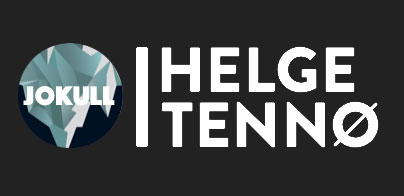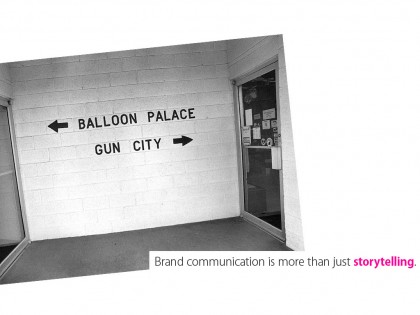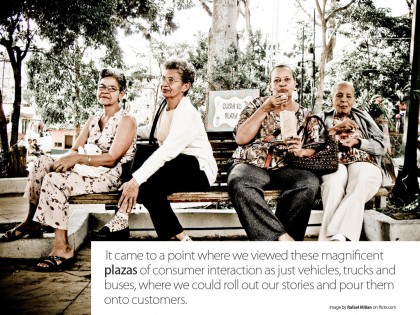The traditional view of advertising is, as have been written on this blog before :o), pouring communication down pipe shaped channels to consumers who are indifferent
.
(Lending an analogy from Charles Leadbeater)
primary care settingb. Hypertension cheap viagra online.
.
Storytelling has grown to become THE main source of communication between the brand and the participant.
Even in digital communication, with all its arenas (as opposed to channels), we historically have kept ourselves, and our clients, busy with building non-interactable stories.
It came to a point where we viewed these magnificent plazas of consumer interaction as just vehicles, trucks and buses, where we could roll out our stories and pour them onto customers.
Fortunately, we are getting wiser. And as a breath of fresh air many have started discussing advertising in forms of Content Marketing, Brand Utility, New Marketing and New Digital
.
These concepts are built on a truth that branding / marketing / advertising not necessarily has to be all about storytelling. It’s about experiences, creating additional value, becoming relevant and meaningful.
Brands are essentially represented in the consumer as an idea (M. Neumeier calls it the Gut Feeling). Which is a notion of value and meaning, created when the participant reflects on the brand and the use of its products.
According to Stephen King and John Grant, a brand is shaped on the basis of all interactions between it and the participant. The Totality
.
In other words, a brand is NOT an idea based on ONE interaction – It is NOT the storyline in ONE ad.
Every interaction has it’s purpose, and needs to convey the brand in it’s way, in order to create the unified notion of the brand. So, when Barclays Bank in the UK launches a widget, which helps the participants stay updated on the latest financial news. Barclays is investing in the brand idea, with brand content. It is not creating artificial anticipation or interrupting you with a story. It is merely serving the participant some well-deserved value – because we know what’s important to you, and we can participate
.
Now the problem is this… When Barclays might be (rumor) evaluating putting pre-roll advertising inside the widget ??? They are not only not getting it. They are destroying the full beauty of brand totality and brand value.
WHY would you start treating this branded utility as just another vehicle for unwanted branded storytelling? When you finally got what it was all about… value-adding-marketing.



You say.
‘According to Stephen King and John Grant, a brand is shaped on the basis of all interactions between it and the participant. The Totality.
In other words, a brand is NOT an idea based on ONE interaction – It is NOT the storyline in ONE ad. ‘
I couldn’t agree more. But I couldn’t disagree more with your notion that storytelling is a one-time tagline. That’s what ad agencies would have you believe, but its not storytelling.
Storytelling is the totality of the brand experience. it start with storylistening. Capturing the totality of the brand through the anecdotes that are told about it – much like anthroplogy. Then a brand can identify its authentic story platform and infuse every brand experience thereafter with that story platform – in all forms of content
Very good thoughts Simon, I do agree with you but use the terms a bit differently.
I use “Idea/meaning” where you use “story”, as I think that a “gut feeling” doesn’t have to be a story, but can just be a pinch in the stomach.
I do agree that if you make up your own idea/meaning of a brand, you ad value to it and by that automatically give it a story.
But I find using “storytelling” in context with 30 second narratives works better and confuses less when trying to explain the differences between a brand idea communicated through a range of applications andd arenas and a brand idea communicated through a 30 second ad.
Is the brand concept and idea or a story? is it the same?